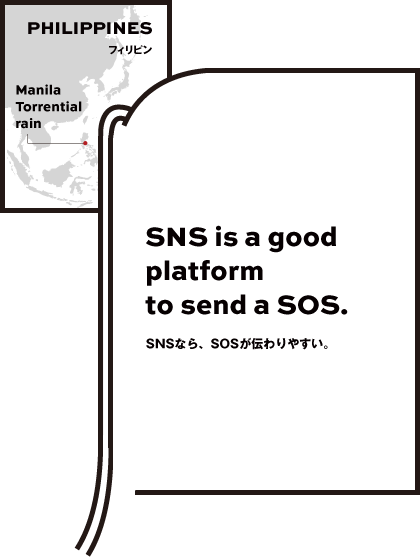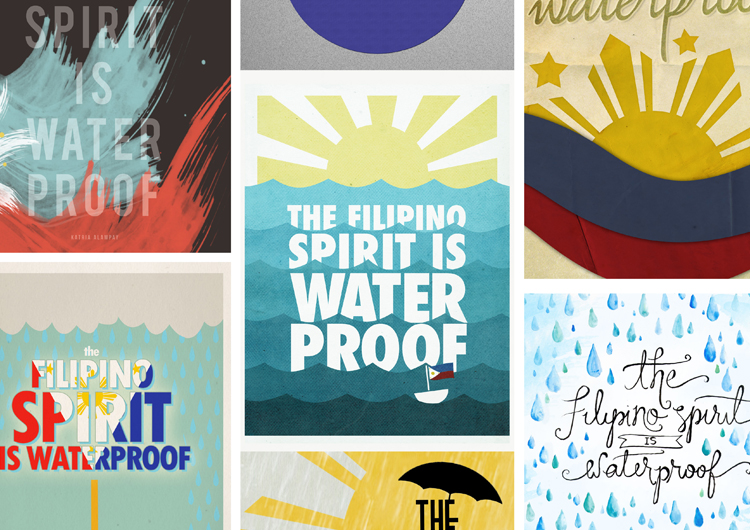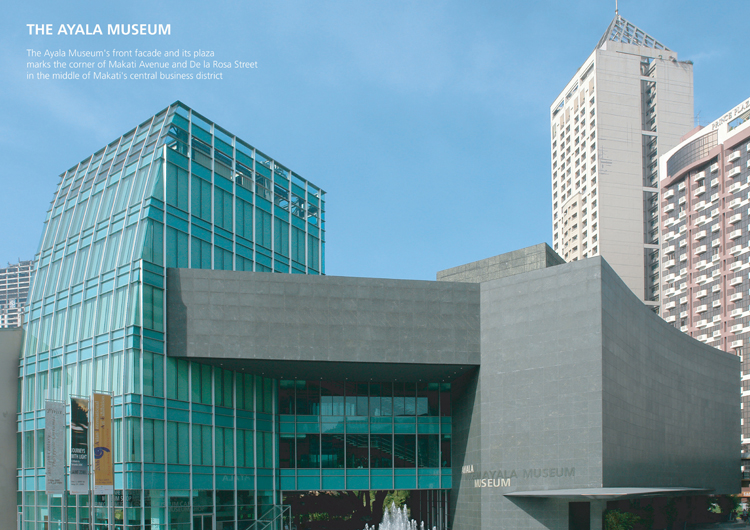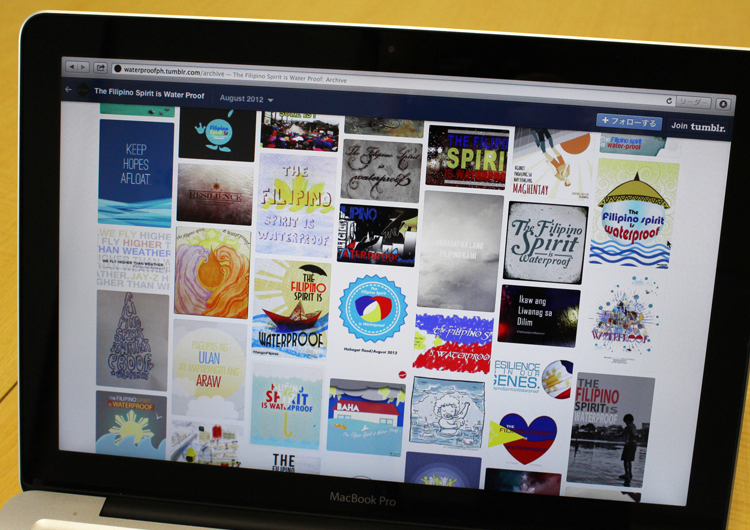
 SNS is a good platform to send a SOS.
SNS is a good platform to send a SOS.
-

- 災害発生直後
- デザイン
- Ayala Museum
- The Filipino Spirit is Waterproof

http://waterproofph.tumblr.com/
Be humble and start with what you can do
In August 2012, the entire national capital region of Metro Manila was ravaged by torrential rains brought by the monsoon season. The immense flooding paralyzed the metropolis.
Spike Acosta and Jei Ente of the Ayala Museum’s marketing and public relations unit were working on inviting new audiences to the museum. By developing the museum’s social media network and online presence, they sought to expand the museum’s network from the niche of dedicated artists and art lovers to reach out to new and younger crowds.
When the floods hit Manila, Acosta and Ente used the museum’s social media channels to help as best they could. Seeing the news reports on television about the resilience of the flood victims and relief volunteers alike, Acosta created the slogan “The Filipino Spirit is Waterproof” which was launched on the museum’s Twitter account to cheer everyone up.
The slogan “The Filipino Spirit is Waterproof” attests to the strength of the Filipino spirit in the face of disaster – not just to overcome the despair brought by flooding but also to be able to offer aid to those who need it most. The spirit of helping each other is cultural to the Filipino people. In Tagalog, the idea of bayanihan embodies the traditional practice of coming together to assist those in need.
The slogan “The Filipino Spirit is waterproof” carried with it the same message that could touch the Filipino heart and consequently win the support of many people.
Practical in a city with scores of
social network users
The slogan which was created in a moment of genuine inspiration quickly grew into a campaign on its own. One after another, Filipino designers and artists who saw the slogan on Twitter began to create posters and images inspired by the slogan.
In just a few hours, 20 items were already posted online and the number continued to grow. In a month’s time, there were 133 photos posted on Tumblr which could be seen by anyone. Most of the posters were created with graphics designed in combination with the slogan.
This unique method of addressing disasters, executed for the first time in the Philippines, was successful because both the disaster survivors and relief volunteers were Metro Manila residents that use social media on a daily basis.
The campaign was covered in TV programs, newspapers and online news items to become widely recognized in Metro Manila. Some people criticized the campaign, saying that it was merely a superficial way of boosting morale. However, considering that the publicity for the campaign enhanced the awareness of Manila residents about disaster preparedness and led to discussions about infrastructure issues in the Philippines that often caused flooding, the campaign was considered to have produced very positive effects.

- Panoramic view of Ayala Museum where Spike Acosta and Jei Ente work in the marketing and public relations unit

- Various inspirational posters designed by Filipino creators and uploaded on the social media channel “Tumblr”

- Many posters were designed by combining graphics with the slogan created by Spike Acosta